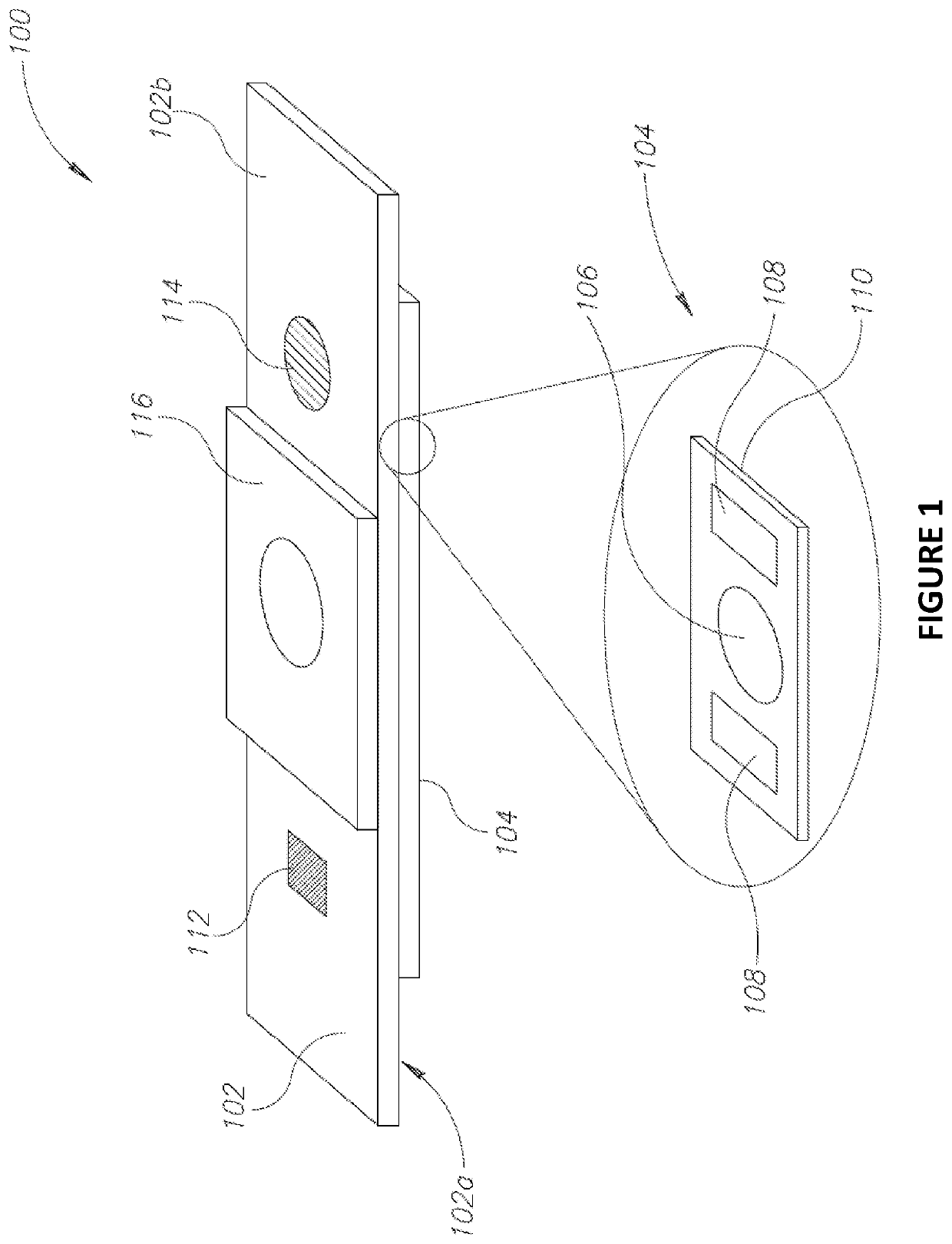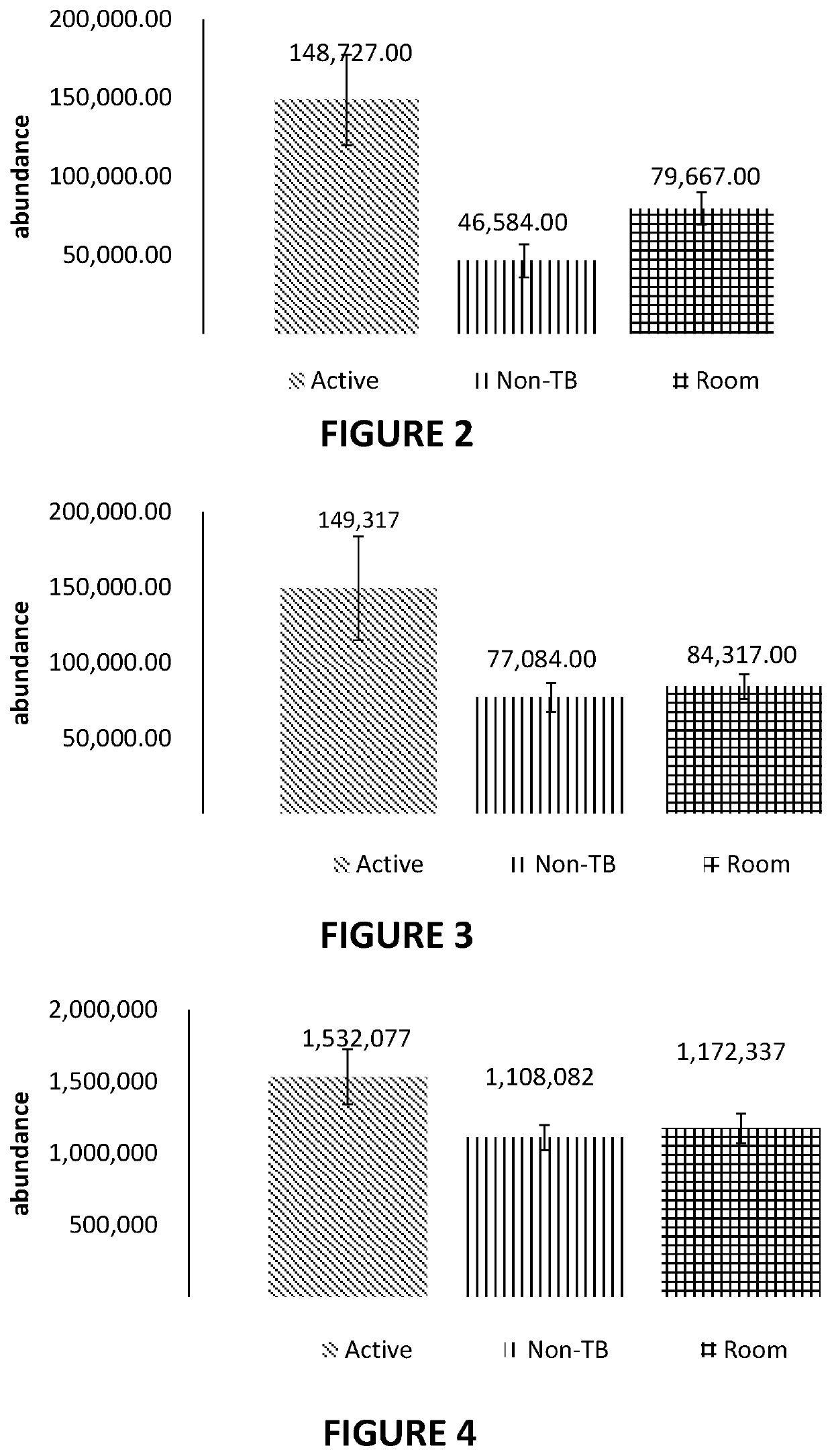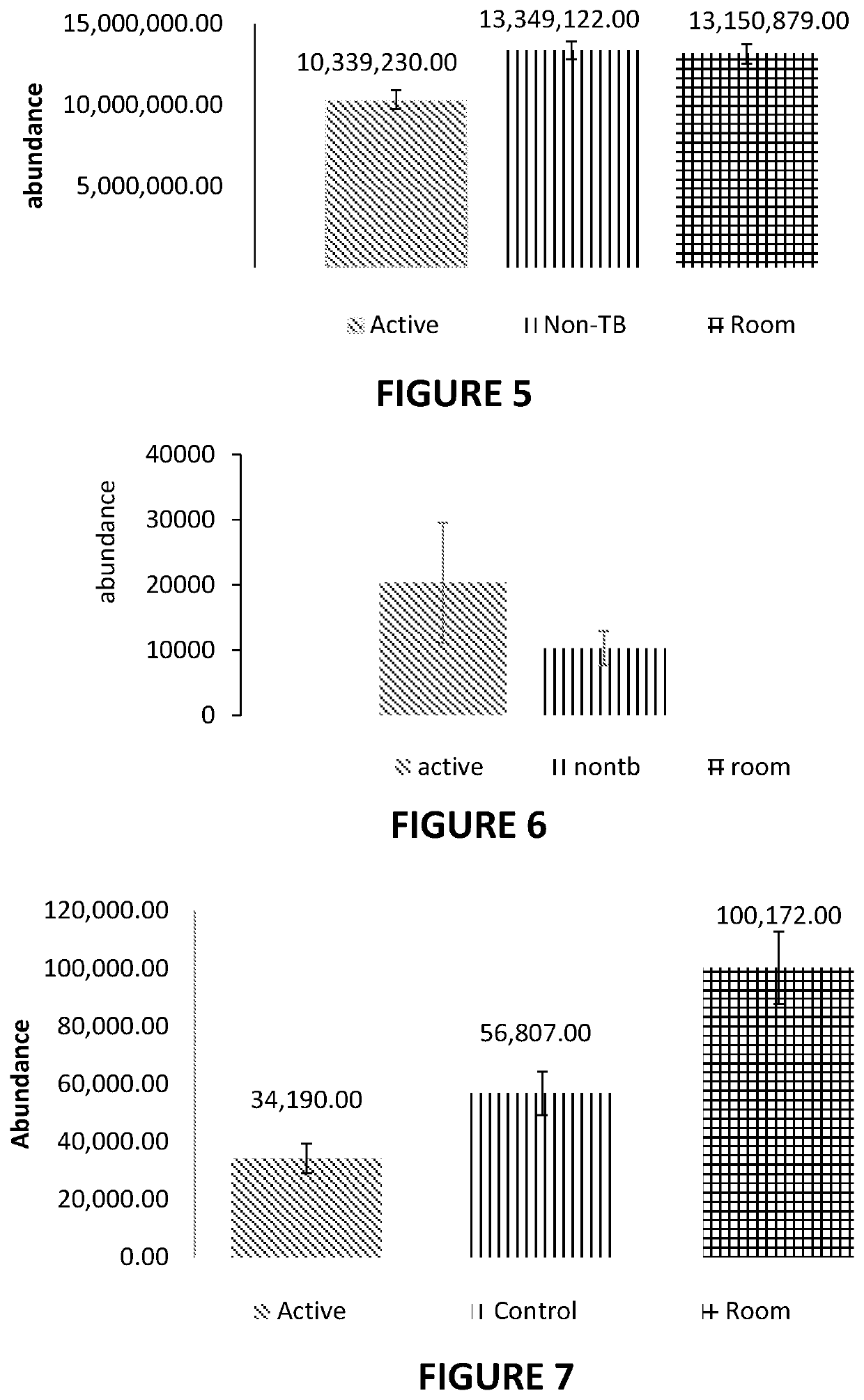Device and methods for detection and monitoring of tuberculosis
a tuberculosis and device technology, applied in the field of tuberculosis detection and monitoring technology, can solve the problems of delayed diagnosis and further spread of tb, inconvenient use, and high cost of equipment used in the use of these methods, so as to achieve fast and reliable diagnosis of pulmonary tuberculosis
- Summary
- Abstract
- Description
- Claims
- Application Information
AI Technical Summary
Benefits of technology
Problems solved by technology
Method used
Image
Examples
example 1
or Array Analysis—DFA Analysis of Samples from the Inner Arm Area, South Africa
[0352]DFA analyses of PDMS samples from the inner arm area of the 66 volunteers in the South African study were made for discrimination between the skin samples of active TB subjects from samples of Non-TB subjects. The results were compared with clinical tuberculosis results. The DFA model was based on the following chemiresistors and their features:[0353]1. diketopyrrolopyrrole-naphthalene copolymer (PDPP-TNT) chemiresistor-delta R middle feature.[0354]2. tert-dodecanethiol-based GNPs chemiresistor—delta R peak feature.[0355]3. diketopyrrolopyrrole-naphthalene copolymer (PDPP-TNT)—delta R peak feature.[0356]4. 3-ethoxythiophenol-based GNPs chemiresistor-delta R peak feature.
[0357]The delta R features and areas under curve are chemiresistor characteristics extracted from the responses of the sensors towards the sample. For each sensor there are possible features. Delta R end feature, delta R peak feature...
example 2
or Array Analysis—DFA Analysis of Samples from the Chest Area
[0372]DFA analyses of PDMS samples from the inner arm area of 65 volunteers were made for discrimination between the skin samples of active TB subjects from samples of Non-TB subjects. The results were compared with clinical tuberculosis results. The DFA model was based on the following chemiresistors and their features:[0373]1. decanethiol-based GNPs chemiresistor—area under response feature[0374]2. decanethiol-based GNPs chemiresistor—delta R end feature[0375]3. decanethiol-based GNPs chemiresistor—delta R end feature[0376]4. dodecanethiol-based GNPs chemiresistor—delta R middle feature
[0377]The results are given in Table 2:
TABLE 2distinguishing between Active TB and non TB subjects (chest)VOC testActive TBNon-TBClinicalActive TB100TB resultNon-TB748
[0378]As seen in Table 2, all ten samples extracted from active TB subjects' chests were found positive for TB, while out of the 55 samples extracted from Non-TB volunteers' ...
example 3
or Array Analysis—DFA Analysis of Samples Among HIV Negative and QFT Positive Subjects, South Africa
[0383]Example 3A: analysis of samples from the inner part of the arm—DFA analyses of PDMS samples from the inner arm area of 35 volunteers in the South African study_were made for discrimination between the skin samples of active TB subjects from samples of Non-TB subjects. Among the 35 volunteers, which are HIV negative with QFT positive, five have active TB. The DFA model was based on the following chemiresistors and their features:[0384]1. random networks (RNs) of carbon nanotubes (CNTs) with crystal hexa-perihexabenzocoronene (HBC) with C12 chemiresistor (HBC-C12)—area under response feature.[0385]2. a composite of black carbon with poly(propylene-urethaneureaphenyl-disulfide) PPUU-2S mixed with poly(urethane-carboxyphenyl-disulfide) PUC-2S chemiresistor—area under response feature.[0386]3. 2-ethylhexanethiol-based GNPs chemiresistor—delta R Peak feature.[0387]4. diketopyrrolopyrr...
PUM
 Login to View More
Login to View More Abstract
Description
Claims
Application Information
 Login to View More
Login to View More - R&D
- Intellectual Property
- Life Sciences
- Materials
- Tech Scout
- Unparalleled Data Quality
- Higher Quality Content
- 60% Fewer Hallucinations
Browse by: Latest US Patents, China's latest patents, Technical Efficacy Thesaurus, Application Domain, Technology Topic, Popular Technical Reports.
© 2025 PatSnap. All rights reserved.Legal|Privacy policy|Modern Slavery Act Transparency Statement|Sitemap|About US| Contact US: help@patsnap.com



